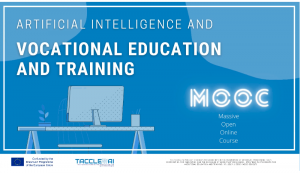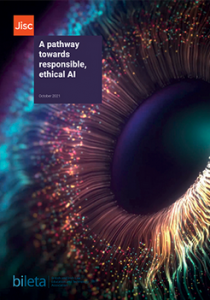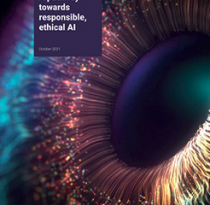AI
AI and VET: MOOC update
 I have spent a little time this morning looking at who participated in the MOOC we ran November and December last year on Artifical Intelligence and Vocational Education and Training. The MOOC was part of the Taccle AI project, funded under the Erasmus+ programme, which has just come to an end.
I have spent a little time this morning looking at who participated in the MOOC we ran November and December last year on Artifical Intelligence and Vocational Education and Training. The MOOC was part of the Taccle AI project, funded under the Erasmus+ programme, which has just come to an end.
There were 246 enrolled participants in the German speaking MOOC and 154 in the English language version.
As might be expected most of the participants in the German language MOOC were from German speaking countries. 204 were from Germany and 29 from Switzerland. There were three participants each from Spain, Serbia, and Italy and 2 each from Greece and China. Although many were from education, especially vocational education and training schools, there were also participants from universities, companies, job centres and local and national government organisations.
Participants in the English language MOOC were from far more diverse and from countries around the world: in total 46 different countries! These were Germany, Australia, Romania, India, Uganda, Spain, Greece, Poland, Belgium, UK, France, Ghana, Albania, Mexico, Pakistan, Namibia, Jordan, Italy, Columbia, United Arab Emirates, Afghanistan, Indonesia, Bosnia and Herzegovina, Finland, Ethiopia, Egypt, Qatar, China, Trinidad and Tobago, Turkey, Portugal, Bangladesh, Guinea, Nigeria, United States, Malaysia, Switzerland, Netherlands, Ireland, Poland, Denmark, Hungary, New Zealand, Lithuania, Japan, Vietnam, Sri Lanka.
The MOOC is currently being translated in to Russian. If anyone else is interested in translating the MOOC or in reusing parts of it, just get in touch (I would be especially interested if anyone wanted to work with me in translating the contents to Spanish). Everything (r nearly everything, is under a Creative Commons license.
And if you missed out last year, we are planning to reopen the MOOC platform in February.
Clarifying AI ethics
 It seems like nearly every day there is a new publication or report about AI and ethics. This is all very good but I am not sure we need more ethics frameworks, rather we need ethical practice. And this is what the JISC publication 'A pathway towards responsible, ethical AI' is focused on.
It seems like nearly every day there is a new publication or report about AI and ethics. This is all very good but I am not sure we need more ethics frameworks, rather we need ethical practice. And this is what the JISC publication 'A pathway towards responsible, ethical AI' is focused on.
Jisc says:
Discussions of artificial intelligence (AI) often jump straight to “ethics”. But there may be a better way. Asking simpler questions first may show that a proposal or product isn’t a good fit for the institution anyway. But if it is, the answers to those questions, and the process of obtaining them, should clarify the ethics, too.
Whether you are choosing, using, or benefiting from artificial intelligence, we hope this pathway will make you more confident in your relationship with it.
Using the pathway
The pathway has four main questions:
-
Does this proposal fit our institution’s objectives?
-
Does using AI fit our institution’s purpose and culture?
-
Are we ready for it?
-
Does using AI raise particular issues?
The full report is downloadable on the Jisc website.
Jobs of 270000 shopworkers in UK at threat from AI

Photo by Nathália Rosa on Unsplash
I'm old enough to remember the first supermarket, Fine Fare, arriving in my hometown, Swindon. I guess it was sometime in the 1950s. And I remember prior to that my mother queuing in the grocery store for a counter assistant who would go and get whatever was on the shopping list (as long as we had sufficient ration coupons). Of course supermarkets totally changed the world of shops and as importantly the work of the employees.
Fast forward to the 1990s. I won a bet (for three beers) with my colleague Professor Gerald Heidegger who assured me that bar codes would never be accepted in German supermarkets by other staff or customers (he also predicted the failure of the new extended opeing hours for supermarkets that has previously had to close at 1230 on Saturdays).
All this is a prelude to predictions for the latest revolution in shopping, discussed in an article, 'Do smart supermarkets herald the end of shopping as we know it?', by Rupert Neate in yesterdays Observer newspaper. The article reports on how the major supermarket chains in the UK - and significantly also Amazon - are trialing cashless shops. Entry will be through a dedicated app, and with the use of hundreds of sensors and cameras and an AI based software platform, shopper will be charged through their credit card and receive a receipt on their mobile phone on exiting the store.
The new systems are claimed to be a response to shoppers dislike of queuing although more likely they are an attempt to reduce costs both by reducing shoplifting (which is said to be rampant with new self checkout systems) and through cutting the numbers of shop workers employed. "While fitting out supermarkets with the new technology costs about £1m-per-store, the firms installing it claim it will pay for itself within 18 months because it will hopefully eliminate theft."
The Observer draws attention to the danger of exclusion for those lacking a smartphone. Emmanuelle Andrews, policy and campaigns officer at human rights group Liberty is quoted as saying: “Shopping should be one of the great levellers, where the businessman in the sharp suit is shoulder-to-shoulder with the pensioner on benefits. Everyone has to buy food, but with this technology only those with a smartphone and credit cards will be able to shop there.”
But if the new system catches on the big impact will be on jobs. "The checkout-free technology is specifically designed to eliminate jobs, and save money,” the artcile quotes Dr Carl Benedikt Frey, an Oxford University economist and expert on automation. "Frey fears that a national rollout of AI stores would send the checkout worker the same way as the elevator operator, which as of today is the only one of 270 job descriptions listed in the 1950 US census to be completely eliminated by automation." AI is a threat to the jobs of 270,000 checkout workers in the UK, most of whom are women. The Office for National Statistics (ONS) has identified supermarket cashier jobs as among the most at risk of being replaced by automation, with 65% of checkout-operator jobs said to be at risk. And overall, The ONS analysis shows that 70.2% of the roles at high risk of automation are currently held by women.
Better Images of AI

Alan Warburton / Better Images of AI / Quantified Human / CC-BY 4.0
The image above is taken from a new repository and web site called Better Images of AI
The predominance of sci-fi inspired and anthropomorphised images, and the lack of readily accessible alternative images or ideas, make it hard to communicate accurately about AI.
This matters because without wider public comprehension of AI technologies, applications and governance, many people are left in the dark as to the important changes that impact their lives.
These AI images also add to the public mistrust of AI, a growing problem for innovation in a field that is sometimes seen as biased, opaque and extractive.
Finally, we think that images like these don't encourage the necessary diversity of people to enter the AI workforce and address the AI talent gap.
The site has been set up by a consortium including the Ada Lovelace Institute, the Alan Turing Institute and Feminist Internet with support from BBC Research and Development among others.
"We need images that more realistically portray the technology and the people behind it and point towards its strengths, weaknesses, context and applications," they say.



